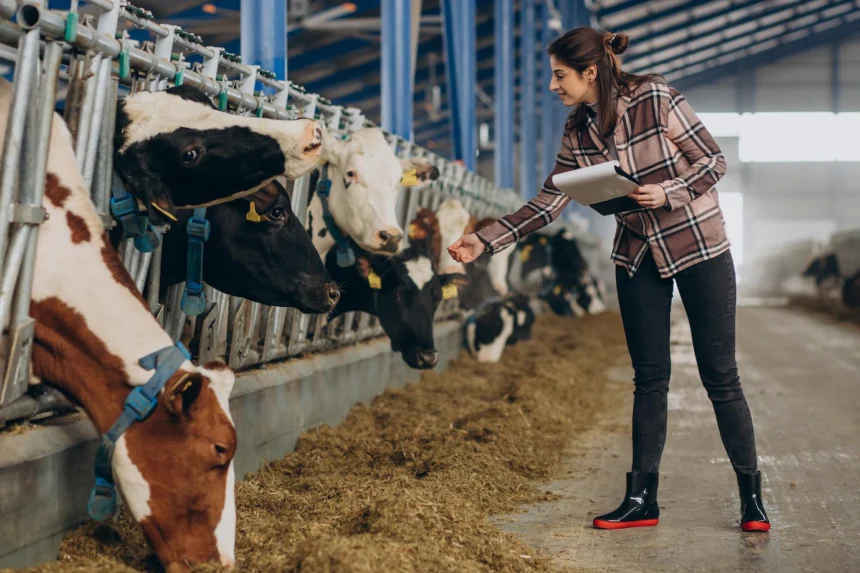Sustainable strategies for integrated livestock and crop farming systems aim to optimize resource utilization, minimize environmental impact, and enhance overall productivity. These strategies involve combining crop production and livestock rearing in a mutually beneficial manner. Here are some key sustainable strategies for integrated livestock and crop farming systems:
- Crop-Livestock Integration: Integrate crop and livestock activities on the same farm to create synergies between the two. Crop residues can be used as feed for livestock, while animal manure can be utilized as fertilizer for crops. This integration helps close nutrient loops and reduces the need for external inputs.
- Rotational Grazing: Implement rotational grazing systems where livestock are moved between different pasture areas. This practice allows for better forage utilization, prevents overgrazing, and promotes healthy pasture growth. It also enhances soil fertility and reduces soil erosion.
- Agroforestry: Incorporate trees and shrubs into the farming system. Agroforestry provides multiple benefits such as shade for livestock, windbreaks, carbon sequestration, and additional income through timber or fruit production. It also enhances biodiversity and improves soil quality.
- Cover Crops and Green Manure: Plant cover crops during fallow periods or between main crops to protect the soil from erosion, improve soil structure, and suppress weeds. Some cover crops can also fix atmospheric nitrogen, reducing the need for synthetic fertilizers. Incorporating cover crops into livestock systems allows for grazing or harvest as forage.
- Nutrient Management: Develop efficient nutrient management plans to minimize nutrient losses and optimize their use. This includes appropriate timing and placement of organic and synthetic fertilizers to match crop and livestock nutrient requirements. Proper manure management techniques, such as composting or anaerobic digestion, can also be employed to reduce nutrient runoff and odor.
- Integrated Pest Management (IPM): Implement IPM strategies to control pests and diseases. This involves using a combination of biological, cultural, and chemical control methods to minimize pesticide use. For example, using beneficial insects, crop rotations, and resistant crop varieties can help reduce pest populations.
- Water Conservation: Adopt water-saving techniques such as drip irrigation, rainwater harvesting, and efficient water management practices. Livestock watering systems should be designed to minimize water wastage. Proper drainage systems can also help prevent waterlogging and soil erosion.
- Genetic Selection and Breeding: Select and breed livestock and crop varieties that are well-suited to the local environment, have improved resistance to diseases and pests, and demonstrate efficient resource utilization. This promotes resilience and productivity within the integrated farming system.
- Monitoring and Data Analysis: Regularly monitor and assess the performance of the integrated farming system. Collect data on crop yields, livestock productivity, soil health, and environmental indicators. Analyze this data to identify areas for improvement, make informed management decisions, and track progress towards sustainability goals.
- Knowledge Sharing and Collaboration: Foster knowledge sharing and collaboration among farmers, researchers, and agricultural extension services. Encourage the exchange of experiences, best practices, and innovative ideas to continuously improve integrated farming systems and promote sustainability.
These strategies can vary depending on local conditions, farm size, and specific objectives. It’s essential to adapt and tailor these strategies to suit the unique circumstances of each farm while considering economic viability and long-term sustainability.
Join 'Farmers Mag' WhatsApp Channel
Get the latest Farming news and tips delivered straight to your WhatsApp
CLICK HERE TO JOIN






